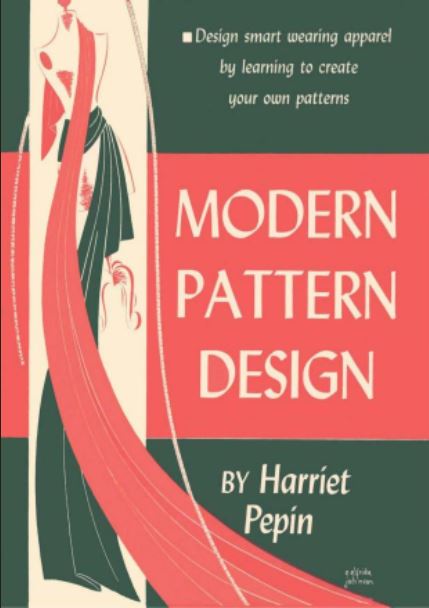‘Modern Pattern Design’ PDF Quick download link is given at the bottom of this article. You can see the PDF demo, size of the PDF, page numbers, and direct download Free PDF of ‘Modern Pattern Design’ using the download button.
Modern Pattern Design PDF Free Download

Principles Of The Waist Draft
A COMPARISON of several plain shirtwaist patterns of the same size, including standard commercial patterns and those made by several drafting systems such as are used in schoolwork.
Will show a marked variation in the shape of the patterns. In the smaller sizes, 32-38, the variations are not so great as in patterns for larger figures.
These variations are of three types: minor differences due to such causes as placing the shoulder or underarm seams a little farther forward or back.
Or using a long or a shorter shoulder length or a small or larger neck or arm size measure; differences in commercial patterns due to the adoption of a different type of figure as a standard by the various patternmakers.
And fundamental differences due to the inadequacy of some of the drafting systems.
Most drafting systems are worked out with the idea of producing a satisfactory pattern by as simple a method as possible in order to reduce the number of problems that must be considered by the person using the system.
In many cases, this has resulted in the use of mechanical devices and arbitrary rules for which it is extremely difficult to give a clear explanation.
Each drafting system uses an individual plan for the drawing of a pattern, yet it should always be possible to explain by a demonstration on a figure the reason for the
method of drawing each line of the pattern; for the shape of all patterns is governed by a few general principles,
In the following discussions of the principles of waste patterns, several systems are used to illustrate each principle that is considered in order to show the similarities.
Dissimilarities of various systems and to give the basis for judgment of the excellence of each.
The systems that are used have been selected because they are ones that are used very universally in home economics classes and because in addition, they illustrate different methods of drawing.
In order to keep the identity of each system, it is designated by the same letter throughout the chapter. No matter what point is being discussed, A B, or C will always refer to a particular system.
Measurements
All drafting systems use some actual measurement of the person for whom the pattern is to be made. In some more mechanical systems.
Only a limited number of measurements are taken such as neck, bust, waist and underarm length, front and back.
It is clear that in these circumstances the width or length of all other parts of the pattern must be based on the proportion of the measured parts.
The consequences of this are: that such systems are rarely able to explain their images in a concrete way; The patterns that are generated do not correspond to the requirements of the unusual shape in any way.
And the slightest inaccuracy in any measurement will be repeated in other parts of the pattern.
equipment details
Just as the doctor, sculptor or artist must understand the purpose of the various tools and equipment common to his profession, it is equally important that the pattern maker understands the purpose for which his tool is designed.
Most of the following items can be purchased from art supply houses, tailor’s supply firms, or concept departments in retail stores:
Triangle: A transparent right triangle is useful in creating a pattern to “square” a corner. The two small dots will serve to establish the actual bias from the vertical or horizontal line.
The diagrams in the following problems show how this is done. In the study of geometry, we learn that the sum of a triangle must be 180 degrees.
This right triangle has two 45-degree angles and one 90-degree angle.
Tracing Wheel: This clever tool saves hours of unnecessary labor of thread marking. It is used to transfer lines or symbols from one pattern to another or from the last pattern to muslin or cloth.
When the test muslin is being made by the designer, ordinary pencil carbon may be used.
When actual garments are cut, white carbon or chalkboard is used. These marks can be easily removed later.
Carbon board: A suitable carbon board can be made by purchasing a 24 x 36 sheet of pencil carbon from an art supply house. It should be placed face up on a similarly sized piece of heavy cardboard or plyboard.
A length of cheesecloth is then laid down and tied securely to the back of the board with gum tape or thumbtacks.
The cheesecloth protects the carbon paper from tearing or wrinkling and will extend its usefulness.
| Author | Harriet Pepin |
| Language | English |
| No. of Pages | 191 |
| PDF Size | 7.8 MB |
| Category | Art |
| Source/Credits | archive.org |
Related PDFs
Modern Pattern Design PDF Free Download
